Best drones 2024: Enjoy the most advanced drones available
Take advantage of the best drones for camera and flight performance that will impress even the most demanding pilots.
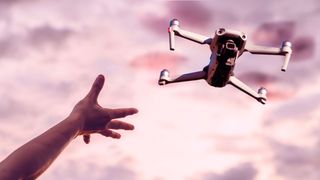
The best drones are often a combination of the best camera technology and the most advanced features. They can also range wildly in price because they're aimed at different uses and types of pilots, so while having a big budget can be useful, it's not always going to be necessary to use all of it.
The best drones include FPV drones, multi-camera drones, sub-250 g drones and even specialist professional models. So, whatever you're looking for, or even if you're unsure, our guide will put you on the right track to finding the best drone.
We'll be delving into the unique features alongside size, weight, flight performance and, of course, camera performance. Every drone is slightly different, so understanding the intricacies and pros and cons of one model over another will help make the most informed decision.
Honestly, it's difficult to go wrong with the best drones because they're all fantastic; it's always best to get things right to avoid the hassle and expense of trading in if you find the model you've chosen isn't quite right for you. So, to be sure you're in the right place, also check out our best camera drones, best beginner drones and best FPV drones guides.
The Quick list
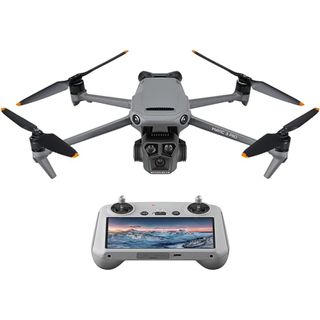
Best drone overall
The DJI Mavic 3 Pro is the world's first consumer drone to offer three cameras, and offers the best image quality available in a consumer model, alongside professional features.
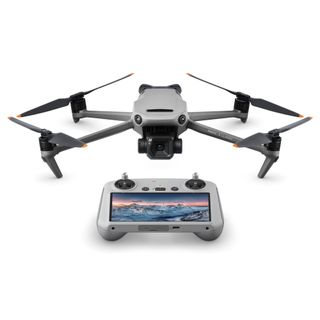
Best single-camera drone
If you're simply looking for the best drone with a single camera, look no further than the DJI Mavic 3 Classic with its impressive Four Thirds Hasselblad camera.

Best non-DJI alternative
The Autel EVO Lite+ is a powerful drone with a 1-inch sensor and professional features that's much less expensive than the DJI Mavic 3 series drones.

Best professional mini drone
The DJI Mini 4 Pro is an excellent pro-spec sub-250g category drone. Overall features and image quality are excellent, and the camera can be rotated 90 degrees for upright shooting.
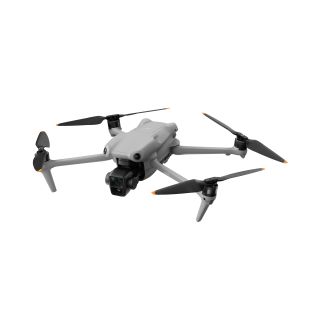
Best dual camera drone
The DJI Air 3 is an impressive dual camera drone offering a range of advanced features to provide impressive all-round performance in all areas.
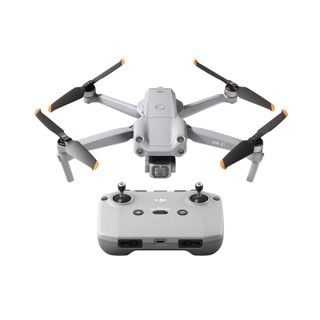
Best portable camera drone
The DJI Mavic Air 2S is a medium size consumer drone offering a 1-inch sensor and excellent image quality alongside a wide range of useful features.
Load the next 6 products ↴

Best drone for beginners
The DJI Mavic Mini 3 is a small and lightweight beginner drone offering excellent image quality alongside ease of use and DJI reliability at an affordable price.
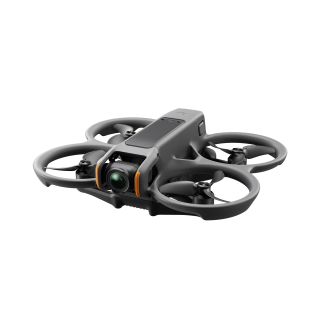
Best FPV Drone
The DJI Avata 2 is incredibly easy to fly and offers excellent 4K video capture. Whether you're an FPV beginner or an experienced pilot, the DJI Avata 2 is a fantastic FPV drone.
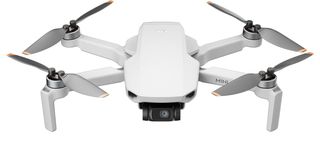
Best entry-level drone
The DJI Mini 4K is the least expensive model in the DJI line-up, offering beginners solid performance alongside impressive image quality for a drone of this level.

Best FPV drone kit
The Emax Tinyhawk III Plus Freestyle RTF Kit is the best traditional FPV drone kit we've tested with excellent performance and an HD VTX for a clear FPV feed to the goggles.
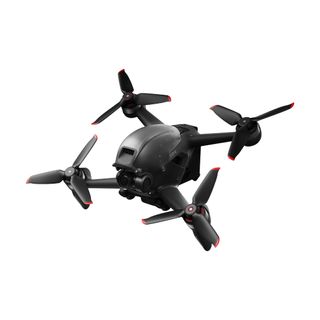
Best premium FPV drone
The DJI FPV may be a few years old now, but it remains an excellent choice for speed and 4K video capture alongside the ease of use you expect from DJI drones.
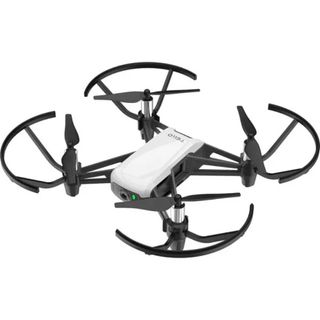
Best for children
Inexpensive, lightweight and easy to use, the DJI Ryze Tello is an option worth considering for beginners, children and safe indoor flights.
Best drones we recommend in 2024
Why you can trust Space.com
Best drone overall
















Specifications
Reasons to buy
Reasons to avoid
✅ You're looking for versatility: The three cameras on offer on this drone give you the ability to shoot different perspectives and different focal lengths at the same time, which can help produce more creative content.
✅ You want to shoot high-quality slow-mo: With this drone, you don't have to choose between quality and frame rates. You can shoot 5.1K up to 75fps, 4K up to 120fps and FHD up to 200fps.
❌ You're on a budget: With all the features on offer, this is quite an expensive drone and may be overkill for casual hobbyists.
🔎 DJI Mavic 3 Pro One of the best foldable drones on the market, this allows you to get stunning videos and offers great flexibility with three cameras that can film at the same time. The only real downside is the price, but we think beginners and pros would be pleased with this purchase. ★★★★★
If you'd like the best all-rounder with features, functionality and camera performance that will suit the requirements of most pilots, the DJI Mavic 3 Pro could be the drone for you. With three cameras, you're spoilt for creative choice and although this is a prosumer drone, it's a great option for beginners, too. Check out our DJI Mavic 3 Pro review where you can discover more about this impressive model.
It features a 24mm Four Thirds Hasselblad camera which captures images at 20MP. Its aperture is adjustable from f/2.8 and f/11, suitable for a wide range of situations and photographic effects, and you can also record video up to 5.1K. On either side of the Hasselblad, you'll find a 70mm medium telephoto camera and a 166mm telephoto, having a wide range of zoom lengths covered.
It features the hallmark Mavic folding design, and like the other models, we found it could provide around 30 minutes of flight time. It also comes with two different smart controller options, both featuring 5.5-inch touchscreens, so there's no need to hook up your smartphone.
The Mavic 3 Pro is very intuitive and easy to fly for a drone of this class since it comes with a number of flight and safety features such as Advanced Return to Home, AirSense ADS-B to detect aircraft, GEO 2.0 geofencing, obstacle sensing and automated flight patterns for video.
Although this is undoubtedly a pricey drone, it's been released at a similar price to older models, making the additional camera fantastic value. If your budget can stretch to it, you will not be disappointed with the incredible features offered by the Mavic 3 Pro.
- Read our full DJi Mavic 3 Pro review.
| Attributes | Notes |
|---|---|
| Design | Three cameras and two smart controllers |
| Functionality | Easy to fly, with obstacle sensing technology |
| Performance | Excellent image quality and videos up to 5.1K |
Best single camera drone












Specifications
Reasons to buy
Reasons to avoid
✅ You want excellent image quality at a more affordable price: This drone contains the same impressive Hasselblad 20MP camera as the other DJI Mavic 3 models, but keeps the price down by doing away with the additional cameras.
✅ You want something easy to fly: With two different controller options and an Advanced Return to Home feature, you should be able to get the hang of this drone quite quickly.
❌ You're after an affordable beginner drone: While this is more affordable than the other DJI Mavic 3 drones, it's still quite pricey and there are several other cheaper options on the market for beginners.
🔎 DJI Mavic 3 Classic This is a great option for people who want the image quality of the DJI Mavic 3 drones without paying extra for additional cameras that they don't have need for. Although it's still not cheap, it's easy to fly and would make a good investment for keen beginners. ★★★★½
The DJI Mavic 3 Classic follows in the footsteps of the hugely popular DJI Mavic Pro 2, with just one impressive camera. Although this time, it features a larger Four Thirds sensor alongside the adjustable aperture. For many pilots, the main Mavic 3 camera is all they need, and this is exactly where the Mavic 3 Classic comes into play.
The camera on here in the excellent 24mm Hasselblad camera, capable of capturing 20MP stills or 5.1K video, so you're getting the best-of-the-best in terms of image quality. You can shoot in either JPEG or Raw, adjust the aperture between f/2.8 and f/11 and make use of a 3x digital zoom.
There are two controller options with this drone, depending on your budget. You can opt for a controller with a retractable phone holder or pay a bit more to get a smart controller with a 5.5-inch touchscreen, which in our DJI Mavic 3 Classic review, we found improved the overall user experience. This drone has the typical foldable design of the Mavic range and flight time was around 30 minutes during our testing.
Even beginners will be able to get the hang of flying this drone quickly thanks to all the on-board flight assistance. The Mavic 3 Classic features Advanced Return to Home, obstacle avoidance using multiple vision sensors and the highly effective ActiveTrack 5.0 for subject tracking. The High-Speed Quick Transfer feature also makes it super easy to share your results with clients or on social media since you can transfer files to your smartphone over WiFi at a rate of 80MB/s.
If you don't need a second or third camera, you can make a decent saving on this drone in comparison to the other Mavic 3 drones without losing many of their other great features and functionality. What's more, the camera on offer is the best available on any consumer drone.
- Read our full DJI Mavic 3 Classic review.
| Attributes | Notes |
|---|---|
| Design | Single Hasselblad 20MP camera and controller options |
| Functionality | Easy to fly, with good safety features |
| Performance | Fantastic image quality with 12.8 stops of dynamic range |
Best non-DJI alternative












Specifications
Reasons to buy
Reasons to avoid
✅ You're looking for top-quality video: This drone shoots up to an impressive 5.4K, which easily gives the DJI drones a run for their money.
✅ You want photographic flexibility: The adjustable aperture on this drone is very handy for experienced photographers set on capturing the perfect shot.
❌ You don't like using an app: The controller doesn't come with a built-in screen and relies on the AutelSky app on your smartphone to work.
❌ You want something ultra-portable: Even when folded, this drone measures 210×123×95mm and weighs 835g, so it's not the easiest to carry around with you.
🔎 Autel Evo Lite+ This drone offers extremely good image and video quality at a very competitive price, making it a good alternative to the DJI drone range. Whilst it's not the smallest or lightest drone out there, it comes with a relatively long battery life and good wind resistance, helping you to make the most of your aerial adventures. ★★★★½
DJI may rule the roost when it comes to the drone market but there are competitors out there, including Autel. One of our favorite non-DJI drones is the Autel EVO Lite+. Much cheaper than a DJI alternative, it comes with a wealth of fancy features and excellent camera functionality.
Not everyone wants a DJI drone, and that can be for many reasons including cost. And while there are many mid-range alternatives available, none are close to the performance of the Autel EVO Lite+. Thanks to an excellent camera, impressive collision avoidance and advanced features, the EVO Lite+ is the best DJI Mavic 3 alternative available.
The camera on the EVO Lite+ offers a 20MP resolution alongside a 1-inch sensor with an equivalent focal length of 29mm. Its aperture can be adjusted between f/2.8 and f/11, which is fantastic for adjusting video exposure, and it can shoot video up to 5.4K, with 4K at 60fps.
Shooting in both Raw and JPEG is possible for still images, and the camera offers an impressive ISO range of 100-6400, which is similar to many entry-level DSLR and mirrorless cameras.
It comes with a controller that looks similar to gaming controllers and attaches to your smartphone to be used with the AutelSky app. The folding design makes it easy to transport, and you can choose from a range of colors including Classic Orange, Deep Space Gray and Arctic White. The high-capacity 6175mAh battery kept this 835g drone in flight for just over 30 minutes during our testing.
Other features include a very sensitive collision avoidance system which came in handy a few times during our Autel EVO Lite+ review, 38mph wind resistance, QuickShots automated flight patterns and Dynamic Track to enable the drone to track moving subjects. We think this drone offers excellent value for money, especially if you buy the Premium Bundle, which comes with additional batteries, spare propellers, a set of ND filters and a shoulder bag.
- Read our full Autel Evo Lite+ review
| Attributes | Notes |
|---|---|
| Design | High-quality folding design with 20MP 1-inch sensor |
| Functionality | Level 7 wind resistance, subject tracking and collision avoidance |
| Performance | Excellent image quality with up to 5.4K video |
Best professional mini drone










Specifications
Reasons to buy
Reasons to avoid
✅ You want a regulator-friendly drone: Sun-250g drones are subject to fewer restrictions than larger drones, which means they’re able to be flown with less fuss.
✅ You need a fully featured sub-250g drone: The DJI Mini 4 Pro offers features comparable to the flagship DJI Mavic 3 prosumer models making it the best sub-250g drone by far.
❌ You need higher wind resistance: The Mini 4 Pro can handle reasonably strong wind, but the larger and more powerful DJI Air 3 and Mavic 3 models are much more adept in stronger winds.
❌ You need dual cameras: The Mini 4 Pro has one excellent camera offering an equivalent focal length of 24mm, but the DJI Air 3 offers dual 24mm and 70mm cameras for added versatility.
🔎 The DJI Mini 4 Pro is the best sub-250g drone to date, offering advanced pro-spec features and excellent image quality. Plus, not only is it perfect for professionals, it’s a great option for beginners, too.★★★★½
Sub-250 g drones are incredibly popular due to their small size and light weight, not to mention they're regulator-friendly in most regions. And with the DJI Mini 4 Pro, you get some seriously impressive features and functionality that's more commonly seen on DJI's flagship models. We were hugely impressed in our hands-on DJI Mini 4 Pro review, where this small but fully featured drone is a firm favourite.
Advanced features include Omnidirectional Obstacle Avoidance, improved subject tracking, Advanced Return to Home, and several video upgrades. The drone is easy to set up and fly, which is great for beginners and experienced pilots, while the Mini 4 Pro is a smooth and responsive flier. The image sensor and camera are the same as the Mini 3 / Mini 3 Pro, so image quality is similar, although image processing is claimed to have been improved.
We're particularly impressed with the image quality of the Mini 4 Pro. Considering the small size of the drone, the 12/48MP 1/1.3-inch sensor packs a real punch. The camera offers a focal length of 24mm and a fixed f/1.7 aperture, and it can also be rotated 90 degrees to allow users to switch between landscape and portrait-oriented photos and video. Images can be captured in both Raw and JPEG formats, giving you extra options when it comes to post-processing.
In terms of video, you can capture in both standard and flat color profiles, and if you're shooting slow motion you can shoot up to 4K. Overall, we think this is an excellent drone for users who don't quite want to pay top prices, but want a seriously compact piece of equipment with pro-spec features.
- Read our full DJI Mini 4 Pro review
| Attributes | Notes |
|---|---|
| Design | Under 250g with a 12/48MP camera |
| Functionality | Smart controller, omnidirectional obstacle avoidance and advanced subject tracking |
| Performance | Shoots high-quality photos and videos in both portrait and landscape formats |
Best portable camera drone





Specifications
Reasons to buy
Reasons to avoid
✅ You're looking for excellent optics in a small package: This is the smallest and lightest of the drones that come with a one-inch sensor, so it strikes an ideal balance between image quality and portability.
✅ You're a videographer in need of top-quality video: The video resolution on this drone reaches an impressive 5.4K and it can also film in 4K at 60fps, leaving plenty of room for cropping and editing in post-production.
❌ You need an adjustable aperture: The aperture on this drone's camera is fixed at f/2.8 so you'd need to use ND filters to control shutter speed when filming video.
🔎 DJI Air 2S The main selling point of this drone is that it offers portability whilst not compromising on excellent image quality with its one-inch sensor. That makes it ideal for keen photographers and videographers who like to carry a drone with them on days out, but the fixed aperture may be a deal-breaker for some. ★★★★½
The DJI Air 2S may be a few years old now, but it's still a competent performer in terms of flight and camera functionality. Not to mention, it's available for a fantastic price. This drone features a 20MP 1-inch sensor with an equivalent focal length of 2mm.
There's no adjustable aperture, this is fixed at f/2.8, but there is up to an 8x digital zoom available. But as we mentioned in our DJI Air 2S review, image quality does suffer with digital zooms so we recommend only going as far as 2x to maintain optimal image quality.
This is a compact and lightweight drone: it weighs just 21oz (595g) and measures 7.1 x 3 x 3.3 inches (18 x 9.7 x 7.7cm) when it's folded up. It's not sub-250g, but it is still small and light enough to make it easy to carry around and pack into a bag.
We're also very impressed with the build quality of the DJI Air 2S. It feels very sturdy and reliable which, given the price point of the Air 2S, is very welcome indeed.
You can shoot up to an impressive 5.4K video and 4K video at 60fps, creating some stunning shots. The only downside is that it comes with a fixed f/2.8 aperture so you can't control the exposure while it's in flight and will need to use a set of ND filters for filming video.
Like many of the other DJI drones, the Air 2S is packed with features that make flying it safe and easy. It's equipped with front, rear, bottom and top obstacle sensors, AirSense ADS-B technology to detect aircraft and multiple automated flight patterns that mean even beginners can shoot complex-looking video footage. We think it offers great value for money if you're looking for a portable drone that can still maintain high image quality and functionality.
- Read our full DJI Air 2S review
| Attributes | Notes |
|---|---|
| Design | Light and compact with a one-inch sensor |
| Functionality | Advanced Pilot Assistance System and AirSense technology |
| Performance | Sharp images with little fall-off and digital zoom |
Best drone for beginners











Specifications
Reasons to buy
Reasons to avoid
✅ You're looking for a more affordable beginner option: If your budget can't quite stretch to the DJI Mini 3 Pro, then the DJI Mini 3 is a great option and comes with the same high-quality camera on board.
❌ You want more advanced flying features: To save money, this drone doesn't come with obstacle avoidance or subject tracking, so you'll need to be very careful not to let it bump into things when flying it.
🔎 DJI Mini 3 With the same excellent camera on board, this is a great alternative to the DJI Mini 3 Pro for those on a tighter budget who want a more accessible beginner model. The only catches are that it doesn't come with obstacle avoidance or subject tracking and the 4K video tops out at 30fps. ★★★★
If the DJI Mini 4 Pro is out of your price range, the DJI Mini 3 is the next best option and even uses the same sensor. This means that image quality is almost identical, which is great news for pilots on a budget.
This is a lower-end model so you won't get advanced collision avoidance, but you do get everything you need in terms of features to give you years of faithful aerial service.
The camera provides an equivalent focal length of 24mm which is wide-angle and an ideal focal length for aerial photography and video. This is backed up by a 1/1.3-inch 12MP sensor and fixed f/1.7 aperture.
The camera also rotates 90° to shoot photos and videos in both landscape and portrait formats, which is a most welcome feature for photographers and those creating aerial videos for social media.
In our DJI Mini 3 review, we found the ISO handling to be excellent throughout the full range of ISO 100-3200. Photos can be captured in both Raw and JPEG formats. Video can be captured up to 4K at 30 fps in the Normal color profile.
So, while not as good as the Pro 4 which can shoot in the flat D-Log M color profile for color grading and professional workflows, it's ideal for beginners and intermediate users.
- Read our full DJI Mini 3 review
| Attributes | Notes |
|---|---|
| Design | Excellent 12.1MP camera with 1/1.3-inch sensor |
| Functionality | More basic, with no collision avoidance or subject tracking |
| Performance | Films in portrait or landscape, but only 30fps at 4K |
Best FPV drone






Specifications
Reasons to buy
Reasons to avoid
✅ You want an easy FPV drone: With the incredibly intuitive Motion Controller, anyone can enjoy easy and immersive FPV flight.
✅ You would like to capture FPV video: FPV looks amazing because it provides the viewer with an almost bird’s eye perspective.
❌ You want to capture photos: While the Avata 2 can capture photos in JPEG format, it’s extremely limited in this capacity. A camera drone is much better for this.
❌ You don’t like FPV goggles: Not everyone gets on the FPV goggles and some people can suffer from motion sickness using them.
🔎 DJI Avata The DJI Avata 2 is DJI’s best FPV drone to date, with the ability to be used by beginners or expert FPV pilots to capture great quality and immersive 4K video. The Motion Controller 3 is a breeze to use and the DJI Goggles 3 provide a crystal clear FPV feed.★★★★½
It's fair to say that DJI has revolutionised FPV drone flight, making this complicated type of drone accessible to even absolute beginners. The DJI Avata 2 is a cine whoop FPV drone with a fantastic camera for capturing immersive FPV video, and it's well-suited to beginners and experienced FPV pilots alike.
For beginners, the DJI Motion 3 Controller is incredibly intuitive and makes FPV flight as easy as playing a computer game. All that's required is for the pilot to pull the trigger to fly forward while tilting the controller forward or backward to ascend and descend. Turning is achieved simply by tilting the controller to the left or right. Plus, GPS positioning holds the drone in a hover when the trigger is released.
For more advanced pilots, the drone can be flown in Acro mode using the DJI FPV Remote Controller 3 but this is for experts because, as we found out in our DJI Avata 2 review, the drone can be crashed extremely easily. Whether you're a beginner or an expert pilot, you'll enjoy the new DJI Goggles 3 which provides a clear and crisp 1080p 60fps feed of the FPV camera using DJI 04 Video Transmission.
The FPV camera of the Avata 2 can capture 4K 60fps video, and if you're happy to reduce the resolution of 1080p you can get framerates of up to 120fps. Different color profiles are available, including Normal for straight-out-of-camera footage, and D-Log M flat profile if you want more advanced post-processing options and color grading. We've found the video quality to be fantastic here and there's no reason you can't use the camera here to capture video alone — but some FPV pilots prefer to attach action cameras to the drone instead.
- Read our full DJI Avata 2 review
| Attributes | Notes |
|---|---|
| Design | Easy to fly with beginner-friendly Motion Controller |
| Functionality | Great video feed via DJI Goggles 3 |
| Performance | Excellent video quality with immersive results |
Best dual camera drone











Specifications
Reasons to buy
Reasons to avoid
✅ You need two focal lengths: With cameras offering 24mm and 70mm equivalent focal lengths, this versatile drone can be used to capture a range of subjects.
✅ You need a balanced drone: The Air 3 sits between the Mini 4 Pro and the Mavic 3 Pro, offering similar features and functionality but is lighter than the Mavic with more powerful than the Mini.
❌ You need an adjustable aperture: This drone has two cameras with fixed apertures, so if you'd prefer a model with an adjustable aperture for video, take a look at the Mavic 3 Classic and Mavic 3 Pro.
❌ You need a small and lightweight drone: If you'd prefer an easy-to-carry sub-250g drone with similar features to the Air 3, take a look at the DJI Mini 4 Pro.
🔎 The DJI Air 3 is an impressive drone overall and one that can suit the needs of both beginners and professionals. It's a feature-packed model with advanced functionality including omnidirectional obstacle avoidance and excellent image quality from the dual cameras. ★★★★1/2
With a power to weight ratio that makes flying in stronger wind than sub-250 g drones, the DJI Air 3 is an impressive performer pilots will undoubtedly enjoy. THis drone features two cameras with focal lengths equivalent to 24mm and 70mm. Each of these is backed up by the same sensor found in the impressive DJI Mini 3 and Mini 4 Pro.
You can shoot vertically using in-camera digital cropping, capture photos at 48MP, shoot slow-motion video at 4K and capture video in standard and flat color profiles. That's an impressive suite of features, and users will appreciate the flexibility of the focal lengths on offer to provide creative flexibility in a wide range of aerial situations.
The Air 3 is a medium-sized model that sits between the DJI Mini 4 Pro and the DJI Mavic 3 Pro, with all three offering similar flight features. It's larger and more powerful than the former, with a maximum wind resistance of 27mph, and is slightly smaller and lighter than the latter with a weight of 25.4oz / 720g.
Flight times average at around 35 minutes per battery before return to home is automatically initiated when the battery reaches 20%, so with the Fly More Bundle that includes three batteries, that's a reasonable amount of flight time.
Alongside precise GPS positioning, the Air 3 offers omnidirectional collision avoidance and advanced return to home, which in our DJI Air 3 review, we found incredibly useful. This is on top of incredibly easy-to-use flight controls, stable flight performance, advanced subject tracking functionality and to top it all off, excellent image quality for both photos and videos from both of the cameras.
- Read our full DJI Air 3 review
| Attributes | Notes |
|---|---|
| Design | Mid-sized drone with a folding design |
| Functionality | Impressive object tracking and omnidirectional obstacle avoidance |
| Performance | Excellent dual 24mm and 70mm cameras. |
Best entry-level drone






Specifications
Reasons to buy
Reasons to avoid
✅ You’re on a budget: With most of the features you could need as a beginner, the DJI Mini 4K comes in at a fantastic price making it the most affordable DJI drone available.
✅ You only need a basic drone: The Mini 4K has all the features you need to capture aerial photos and videos, so if you don’t need all the bells and whistles it's an obvious choice.
❌ You want a better camera: The Mini 4K camera produces great image quality, but the DJI Mini 3, DJI Air 3 and the DJI Mavic 3 Pro are leagues ahead in this department.
❌ You would like more features: This is a basic model that can shoot 4K video and photos in JPEG and RAW, but more expensive models naturally offer a wider variety of features.
🔎 The DJI Mini 4K is a fantastic drone for the price, making it a great budget option. Its flight performance can't be faulted and image quality for photos and videos is impressive given the small sensor size. ★★★★★
Nipping at the heels of, and in many cases overtaking, all inexpensive beginner drones, the DJI Mini 4K is a beginner pilot's dream. This is DJI's most inexpensive sub-250 g drone, and is capable of capturing great quality video in 4K up to 30 FPS, 2.7K up to 30 FPS and 1080p up to 60 FPS. Photo capture is also available in both JPEG and RAW formats.
This palm-sized drone weighs just 8.7 oz / 249 g, which means that US pilots won’t have to register with the FAA or use Remote ID if using the drone for recreational purposes. UK pilots will, however, still have to register as an operator with the CAA. Take a look at our full review of the DJI Mini 4K to learn more about this impressive entry-level model.
Despite its small size and lightweight, the Mini 4K offers Level 5 wind resistance which equates to up to 24 mph, and is impressive for an entry-level drone. Flight times typically average around 21 minutes before Return to Home is initiated when the battery reaches 20%. It's far from the best flight time, so we recommend investing in the Fly More Bundle that includes three batteries.
Unsurprisingly given the size of the DJI Mini 4K, the image sensor on board is pretty small; it's a 12MP 1/2.3-inch CMOS sensor, but despite its small size size we found the image quality to be impressive and perfectly acceptable for beginners.
The megapixel limitation means you'll be able to print at around A3 size natively. But if you're an Adobe Lightroom user, you'll be able to apply the Super Resolution feature to DNG files to increase file sizes by 4x.
There are several noteworthy camera features here, including automatic exposure bracketing and a built-in panorama function, which photography enthusiasts will no doubt appreciate. There are also automated flight patterns - Quickshots - which will allow you to capture professional-looking videos at the touch of a button: the perfect tool for a beginner.
- Read our full DJI FPV review
| Attributes | Notes |
|---|---|
| Design | A small and lightweight sub-250 g model with a folding design. |
| Functionality | features are basic but there are enough for beginners. |
| Performance | Image quality is great considering the small sensor. |
Best FPV drone kit






Emax Tinyhawk III Plus Freestyle RTF Kit
Our expert review:
Specifications
Reasons to buy
Reasons to avoid
✅ You would like to learn how to fly FPV freestyle: This kit is designed specifically for beginners and for performing aerial stunts such as rolls, flips and dives.
✅ You want a digital FPV drone: Most traditional FPV drone kits use an analogue VTX (FPV feed), but the Tinyhawk III Plus Freestyle uses the digital HDZero system.
❌ You would like hover functionality: If you'd like camera drone functionality such as hovering and Return to Home, the Avata 2 is an FPV drone that can do both.
❌ You need 4K video capture: This drone only captures unstabilized 720p goggle footage and is too small to carry an action camera, so if you need 4K video consider the DJI Avata 2.
🔎 The Emax Tinyhawk III Plus Freestyle RTF Kit is fun to fly, offering beginners a progressive approach to FPV flight. It's tough and is highly capable considering its small size. ★★★★★
The Emax Tinyhawk III Plus Freestyle Kit is a traditional ready to fly (RTF) drone kit that FPV beginners and more experienced pilots will find to be a huge amount of fun. It's an incredibly tough drone and this design, along with the tuning, make it possible to fly freestyle/perform aerial stunts and is a great drone for learning how to fly FPV.
Take a look at our full Emax Tinyhawk III Plus Freestyle Kit review where we gave this impressive drone a top rating. The kit includes everything you need to get started, so out of the box you're ready to fly once everything is charged. Plus, the digital FPV feed provides a clear and higher-resolution goggle feed.
Being a freestyle FPV drone, the Tinyhawk III Plus sports a lightweight X-shaped airframe with exposed propellers and electronics that are exposed on the sides. The HDZero camera sits recessed slightly at the front of the drone, while the single 1S or two 1S batteries are attached to the top with a Velcro strap.
The goggles included here, the Transporter 2 HD FPV goggles are capable of displaying an 1080p on-screen image and can capture 720p 60 FPS video. If video is your main focus, you'll likely want to find something capable of capturing at a higher resolution, but for beginners it's a good place to start. It's easy to capture too, with the goggles having a built-in DVR that can take a microSD card up to 64GB.
- Read our full Tinyhawk III Plus Freestyle review
| Attributes | Notes |
|---|---|
| Design | X-shaped freestyle FPV design in miniature. |
| Functionality | Standard basic FPV drone, but the camera is digital. |
| Performance | A huge amount of fun with a clear and crisp FPV feed to the goggles. |
- Read our full DJI Mini 4K review
Best premium FPV drone




Specifications
Reasons to buy
Reasons to avoid
✅ You want the full immersive FPV experience: This drone comes with the DJI Goggles V2, allowing pilots to fully immerse themselves in the drone's perspective. Just make sure you have someone else on hand to act as a spotter to avoid any mishaps.
✅ You want a drone you can learn and develop your skills with: The various flight modes available on this drone mean that it caters to relative beginners as well as more experienced pilots, so you won't need to upgrade once you become more skilled.
❌ You want something that's easy to transport: This drone doesn't feature the convenient folding design that you get with the DJI Mavic range, so you'll need quite a big bag to carry it and will also need to remove the propellers to stop them getting damaged in transit.
❌ You're serious about aerial photography: More seasoned photographers may find this drone a bit limiting, since it only shoots in JPEG and there is no option to shoot in Raw. It also lacks the quality and automated shooting modes common to the Mavic drones.
🔎 DJI FPV This drone offers the full FPV immersive experience and has enough flexible features to cater to a range of different skill levels, making it great fun for anyone to fly. Those whose main focus is photography and image quality may be better off with the DJI Mavic range, but the DJI FPV is ideal for hobbyists who want to experience the thrill of flying an FPV drone. ★★★★
The DJI FPV may be a little long in the tooth, but it's still available to buy and is an incredibly fast FPV drone. And while it's certainly not ideal for capturing photos, it can capture awesome 4K videos at up to 60 FPS. The camera itself houses a 12MP 1/2.3-inch COMS sensor, while the lens provides a wide-angle equivalent focal length of 14.66mm.
When paired with the DJI Goggles VI, the DJI FPV is about as close as you'll ever get to feeling like you're flying while keeping your feet firmly on the ground. It helps that the view within the goggles is beautifully crisp and sharp thanks to its high quality screens. The motion controller is great to use, too: it sits comfortably in your hands and is intuitive and responsive.
It's worth noting, however, that it's a bit less lightweight and portable than some of its counterparts in the Mavic series. At 10 x 12.3 x 5 inches, you'll need a large bag to transport it along with all the accessories required, but we think it's worth it for the high-speed flying experience it provides.
The DJI FPV is a fun way to get into flying from a first-person perspective, so we think it's worth it for someone looking to improve their skills and do some immersive flying.
Following our DJI FPV review, if you're a beginner the DJI Motion Controller is your best option for this drone. Although, the DJI Avata 2 would be much more suitable overall if you're interested in getting started in FPV. The DJI FPV is, however, much less expensive so it may be a great option if you're on a tight budget.
- Read our full DJI FPV review
| Attributes | Notes |
|---|---|
| Design | Non-foldable but comes with DJI Goggles V2 |
| Functionality | Range of different flight modes to suit all levels |
| Performance | Great videos but not the best for still images |
Best drone for children





Specifications
Reasons to buy
Reasons to avoid
✅ You want to test out drone flying for the first time: This drone is a nice inexpensive way to try out the world of drones without worrying about crashing a seriously expensive bit of kit on your first flight.
✅ You want a fun present for kids: We think this drone would make a fun gift for any adventurous kids in your life, especially as it's safe to fly it indoors as well as in the backyard.
❌ You're looking for high image quality: In line with the price, the DJI Ryze Tello only offers 5MP still images and 720p video, so it's more suited to people who want to have fun flying than to people who want to capture brilliant shots.
❌ You want to do extended flying sessions: The battery life on this drone means that you can only get around 11-13 minutes of flying time.
🔎 DJI Ryze Tello As the cheapest drone on our list, this is ideal for anyone who wants to try out drone flying for the first time and would make a great gift for kids as well. It lacks the image quality of more expensive drones and the battery life is quite short, but it's a lot of fun and a good way to learn some initial flying skills. ★★★★
The DJI Ryze Tello is a great choice for not only for those dipping their toes into drone piloting, but also children. While there are plenty of drones out there for professionals, following our DJI Ryzel Tello review we would consider it an ideal inexpensive first drone for beginners and children.
The Ryze Tello certainly isn't going to win you any awards in the photography and video department with its 5MP camera and 720p video capture. That said, it's still a great drone for learning how to combine flight with image capture. There's no gimbal with the camera mounted directly to the front of the drone.
There are, of course, other downsides given the price point of the Tello (which comes in around $100). You'll only get around 13 minutes of flight time here, but it's fun to fly and a great introduction into the world of drones for beginners. You can control the drone from the smartphone app it can be paired with. Not to mention, it can be programmed using Scratch making it a suitable choice for kids.
The DJI Telly Ryze can take off from the palm of your hand and be flipped in mid-air. You can even fly it indoors thanks to the propeller guards and the fact it weighs just 80 grams. It's worth noting that the flight distance on this drone is limited to 100m, however, and power is limited so only fly outdoors on windless days.
The drone is fun and easy to operate, with a really responsive joystick controller (via the app). It's also not overly sensitive, so the user can feel fully in control when piloting the drone.
- Read our full DJI Ryze Tello review
| Attributes | Notes |
|---|---|
| Design | Sleek, lightweight and affordable, with propeller guards |
| Functionality | Easy to fly with fun trick flight features |
| Performance | Responsive controls and basic camera functions |
Buying advice
Buying a drone is exciting but can also be an overwhelming experience, considering the myriad options on the market. While there are hundreds of models to choose from, the advances in drone technology mean you're unlikely to find a really bad quality drone. However, they're usually a considerable investment, so it's worth thinking about what you're looking for in a drone to find the perfect fit for you.
DJI is the market leader in drone technology. Their models also tend to be relatively good value considering their quality and the features they come with. DJI has an extensive lineup, with models for all budgets and abilities. Among other famous brands, you might want to consider Autel, Parrot and Skydio, all of which have quality products and unique features.
Remember that if you're buying a drone weighing more than 249g, you'll need to register as a pilot with the CAA (UK) and FAA (US). The process is quick, easy, and relatively inexpensive, and failure to do so could result in a considerable fine.
- Read more: Drone regulations
How we test
Space.com reviews a wide range of products, from telescopes, drones, and cameras to 3D printers and VR headsets. Consequently, our reviews have varying formats depending on the type of product being tested. No matter what we’re covering, though, there are three core areas that we look to test when writing our reviews: design, functionality and performance.
The best drones typically offer a combination of features, functionality and photo and video quality. Testing takes place over several days in different locations, environments and weather conditions (excluding rain) to assess flight performance, flight features, overall handling and image quality for both photo and video capture.
Drones are flown using manual flight patterns to test the connection between the aircraft and the controller, latency between the two, the accuracy of the controls, app connection, reliability and the flight experience in general. Automated flight patterns and collision avoidance are also typically available with these models, so these are always tested to check accuracy, reliability and ease of use.
All testing is conducted in a way that meets local aviation laws and restrictions to ensure that all flights are safe and legal. Drone laws vary from region to region, so you must check local laws and make sure that you're following the guidelines for your country before embarking on your first drone flights.
Join our Space Forums to keep talking space on the latest missions, night sky and more! And if you have a news tip, correction or comment, let us know at: community@space.com.
Get the Space.com Newsletter
Breaking space news, the latest updates on rocket launches, skywatching events and more!
James is an award-winning freelance landscape and portrait photographer, as well as a highly experienced photography journalist working with some of the best photography magazines and websites with a worldwide audience. He’s also the author of The Digital Darkroom: The Definitive Guide to Photo Editing. www.jamesaphoto.co.uk
- Rowena CockettContributing writer
- Lloyd Coombes
- Jase Parnell-BrookesManaging Editor, e-commerce